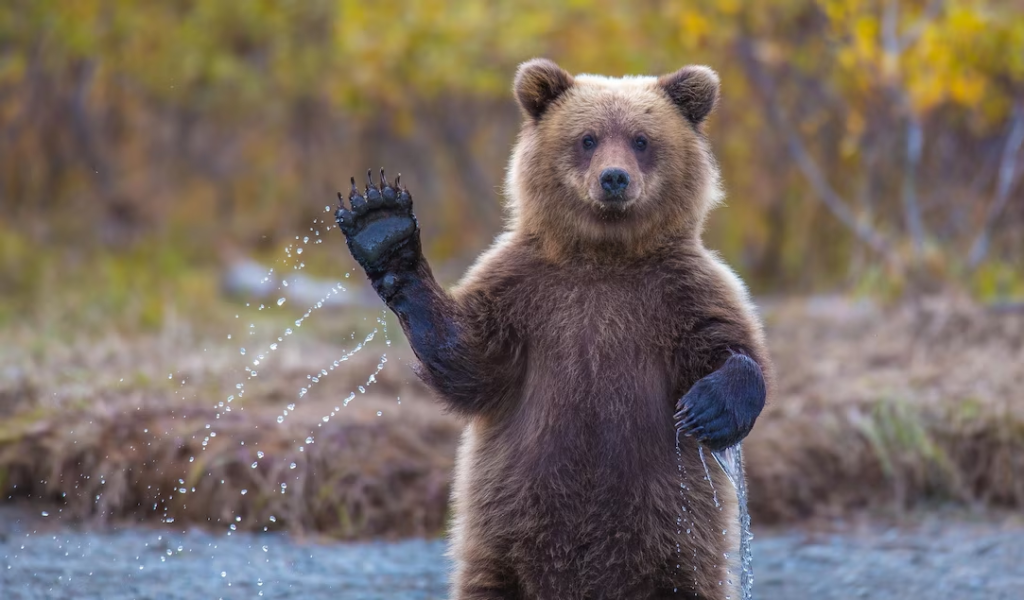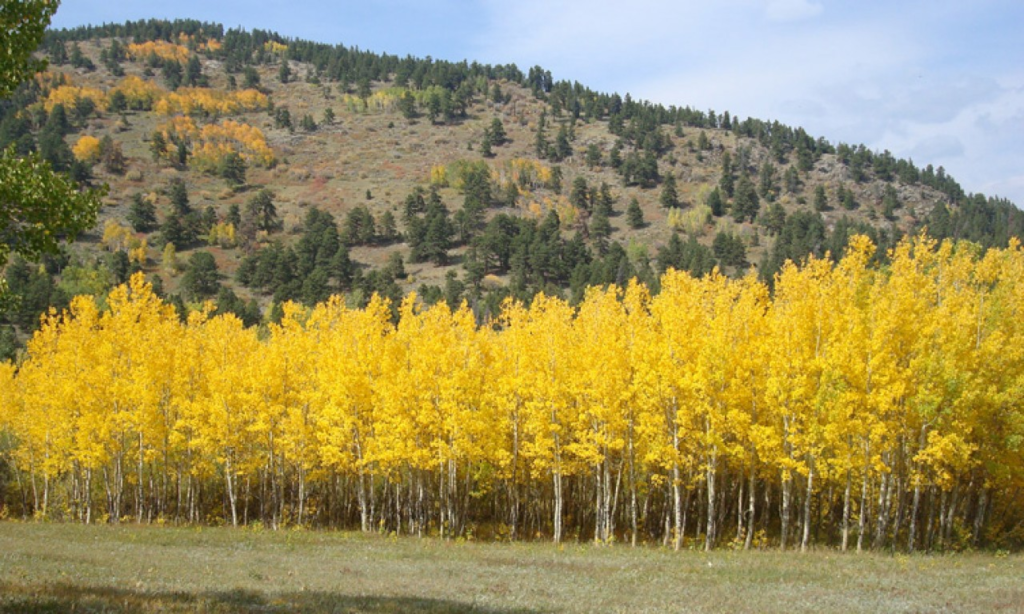Grizzly Bear
There are 4 species of the North American brown bear that are called Grizzly Bears. The mainland grizzly (Ursus arctos horribilis) is the most numerous of the bears that are called grizzlies. The other three are subspecies, namely the Kodiak bear (Ursus arctos middendorffi), the Kamchatka bear (Ursus beringians) and the Peninsular bear (Ursus arctos gyas). The coastal bears tend to be larger than the bears that inhabit inland areas possibly due to the abundance of a stable food supply, namely the numerous salmon runs.
Editors note: Current taxonomy lists one species of brown bear, Ursus Arctos, world wide and as many as 15 distinct subspecies. In North America, there are 5 recognized subspecies, horribilus, middendorffi, Sitkensis, gyas and stikeenensis. The last, stikeenensis, is only found in a small area of British Columbia. As a side note relating to my current series of articles on language, the Linnaean name for the brown bear literally means bear bear. Ursus being Latin for bear and Arctos being Greek for bear.

The Corps of Discovery leaders, Meriwether Lewis and William Clark described the bear as grizzled, meaning gray tipped hair, while naturalist George Ord classified the bear in 1815 as Ursus Horribilis for its ferocious and unpredictable nature.
Originating in Eurasia they entered North America approximately 50,000 years ago and migrated into the lower 48 states about 13,000 years ago. The historic range of the bears extended from the Alaskan and Canadian arctic south into present day Mexico and from the west coast of North America to the Great Lakes and Hudson’s Bay.

Coastal males may weigh as much as 800+ pounds while interior males may weigh 300 pounds or more. Newborn cubs may weigh as little as 18 ounces, highlighting the tremendous size and weight adult bears may attain.
Coloration can vary from blond to near black with dark legs and light colored fur on the flanks and back. Adult grizzlies have a pronounced hump on their shoulders, a dished face and short rounded ears. Another identifying characteristic is its shoulders being higher than its rump. The front claws of an adult bear may be as long as 4 inches that it uses for digging and defending itself. Fleeing prey cannot usually outrun the omnivorous bears as they can run about 30 miles per hour. They will take animals both large and small plus grasses, flowers and fishes as part of their diet.

Grizzly population is about 60,000 bears in North America and now populates approximately half its original range. The average lifespan is about 22 years for males and 26 years for females.
Cranes
There are two species of cranes found in the US; the endangered Whooping Crane (Grus Americana) with less than 6,000 of these magnificent birds in the US and the Sandhill Crane (Grus Canadensis). The Whooping Crane is the larger of the two plus the Sandhill has a sub-species called the Lesser Sandhill, but the only difference between the two Sandhill species is size.


Cranes are members of the rail family; they are omnivorous and feed in marshes and open pastures. While in flight, much like swans they fly with their long necks extended out straight.
The bugling cranes while in flight can be heard for miles and have a gurgling sound, more or less a gerloo-gerloo sound that is very distinctive.
On occasion a vagrant crane species may be found in the western US – the common crane – and is considered quite rare.
The Sandhill being the most common are often seen in large flocks with a large range that runs from the Gulf Coast and some desert lakes in the southwestern states to Alaska and the Canadian arctic.
Quaking Aspen
Quaking Aspen (Populus Tremuloides) commonly called Quakies, are the most widely distributed tree species in North America and are common throughout the mountains of western America. Its distribution from Alaska to central Mexico makes it the most common deciduous tree in the mountains of western America.

It can survive cold temperatures as low as-22 degrees F. and warm temps of 75 degrees F; and is generally found at altitudes from 5,000 to 12,000 feet throughout its western range. Although it is found in parts of eastern America, it does not do well in the humid east as well as it does in the drier western US; contributing to a longer life span in the drier climates of the west, some as long as 200 years contrasted by the shorter life span (usually 60 years) in the eastern US due mainly to root rot. Being clonal in nature, a stand of Quaking Aspen in optimal conditions may live as long as 80,000 thousand years.
Contrary to common belief, it does not propagate from rhizomes, but rather from adventitious buds on the parent root system called the ortet. Most stands are propagated by the root system rather than by seed as the seed lacks a stored food supply and a protective cover.
The tree’s flexible leaf stem allows even light breezes to make the leaves shudder giving the appearance of the tree shaking in the wind.
The buds and bark are a food supply for numerous mammals, both large and small while moose, elk and deer browse the young shoots of this most beneficial tree. The tree is to some degree fire-proof due to its underground root system that allows for rapid regrowth after fire has cleared much of the vegetation that can shade the young trees.
The Great Plains
The plains of western America comprise a major section of the western US consisting of large sections of Kansas, Nebraska, North and South Dakota, Colorado, Montana, New Mexico, Texas and Oklahoma in addition to parts of Canada and Mexico; covering some 500 miles east to west and 2,000 miles north to south.

This is an area of approximately 500,000 square miles of basically flat terrain that extends from the Mississippi River to the foothills of the Rocky Mountains in the United States. This broad expanse of prairie and steppe is broken by occasional valleys, buttes such as Scotts Bluff, Chimney rock and other geological anomalies and escarpments. Some of these escarpments may extend for 200 miles or more such as the Cap Rock of west Texas that defines the eastern boundary of what is commonly called the Staked Plains.
In 1540 Francisco Vasquez de Coronado traversed a portion of the southern plains in his quest of the mythical cities of Gran Quivira and Cibola rumored to hold great quantities of gold and silver. The lack of landmarks gave rise to the belief that Coronado’s scouts drove stakes in the ground to mark their progress on their way and to find their way back to known areas in what is now the Rio Grande valley of present day New Mexico.

Weather can be volatile as much of the southern plains are known as Tornado Alley, giving rise to violent winds, torrential downpours and large hail. Derechos that form on the plains may travel east for hundreds of miles with hurricane force winds, heavy rain and hail. It was the southern plains that were so devastated by drought that gave rise to the Dust Bowl of the 1930s.
You can see part one of this series here.
